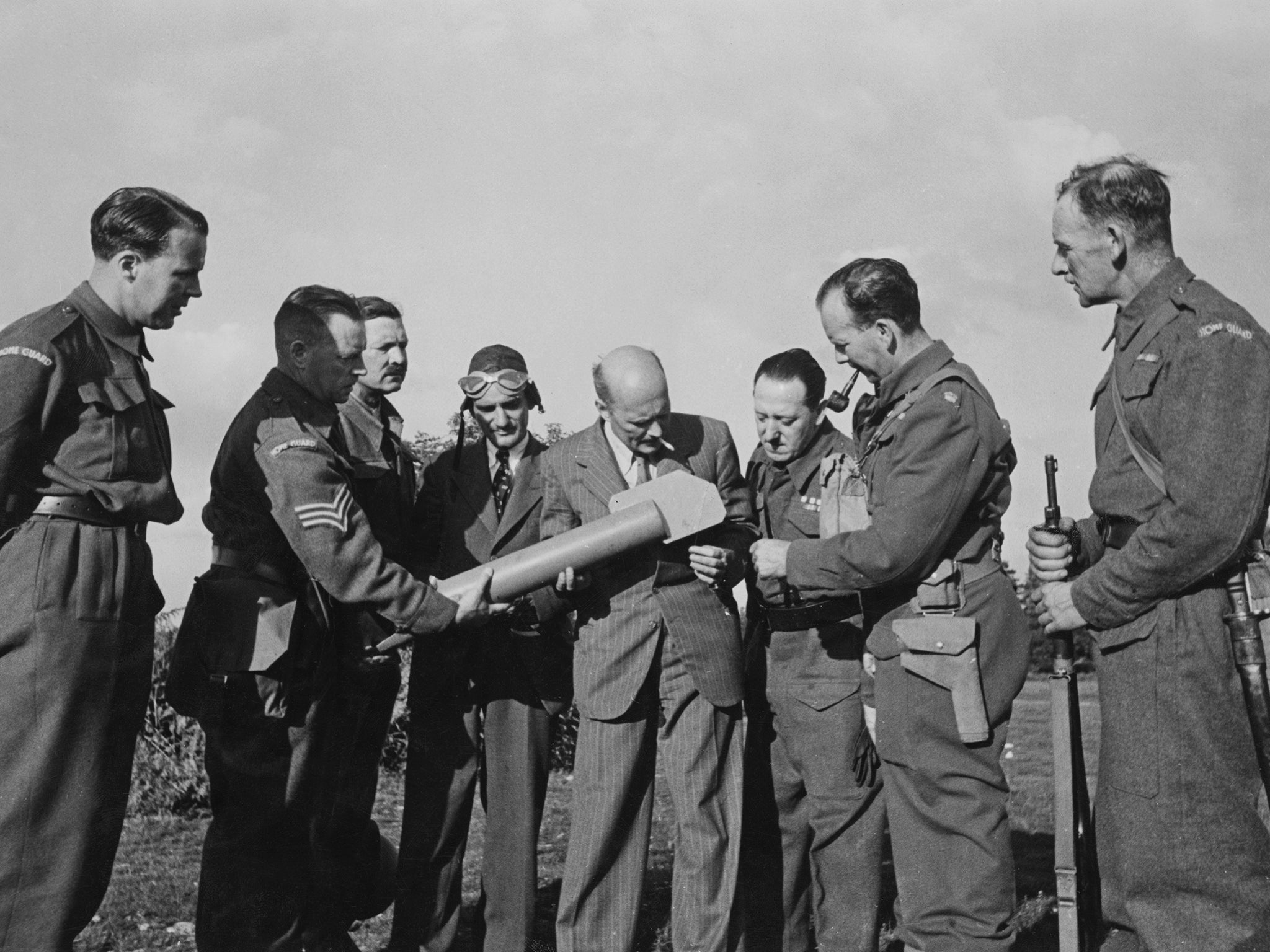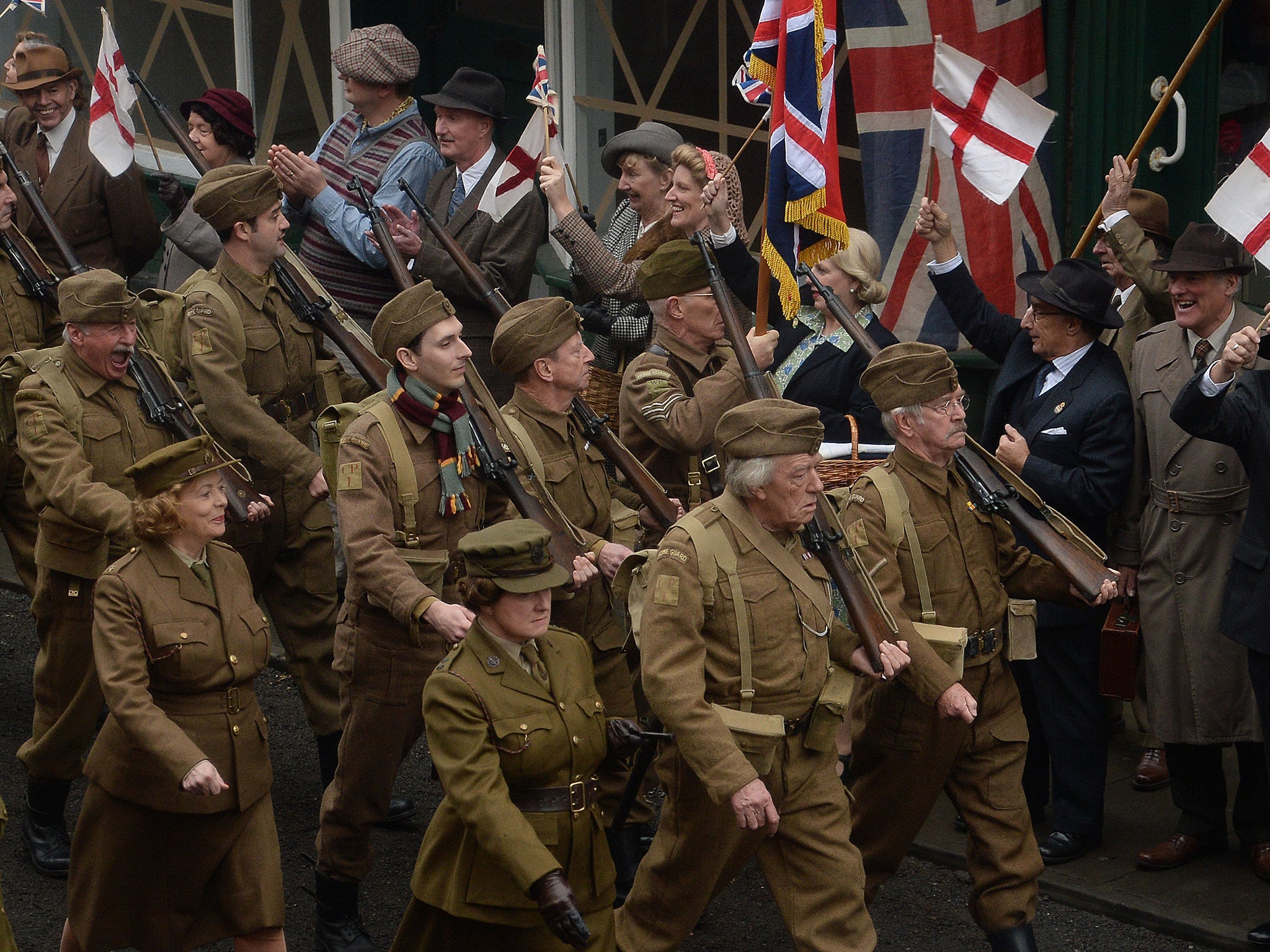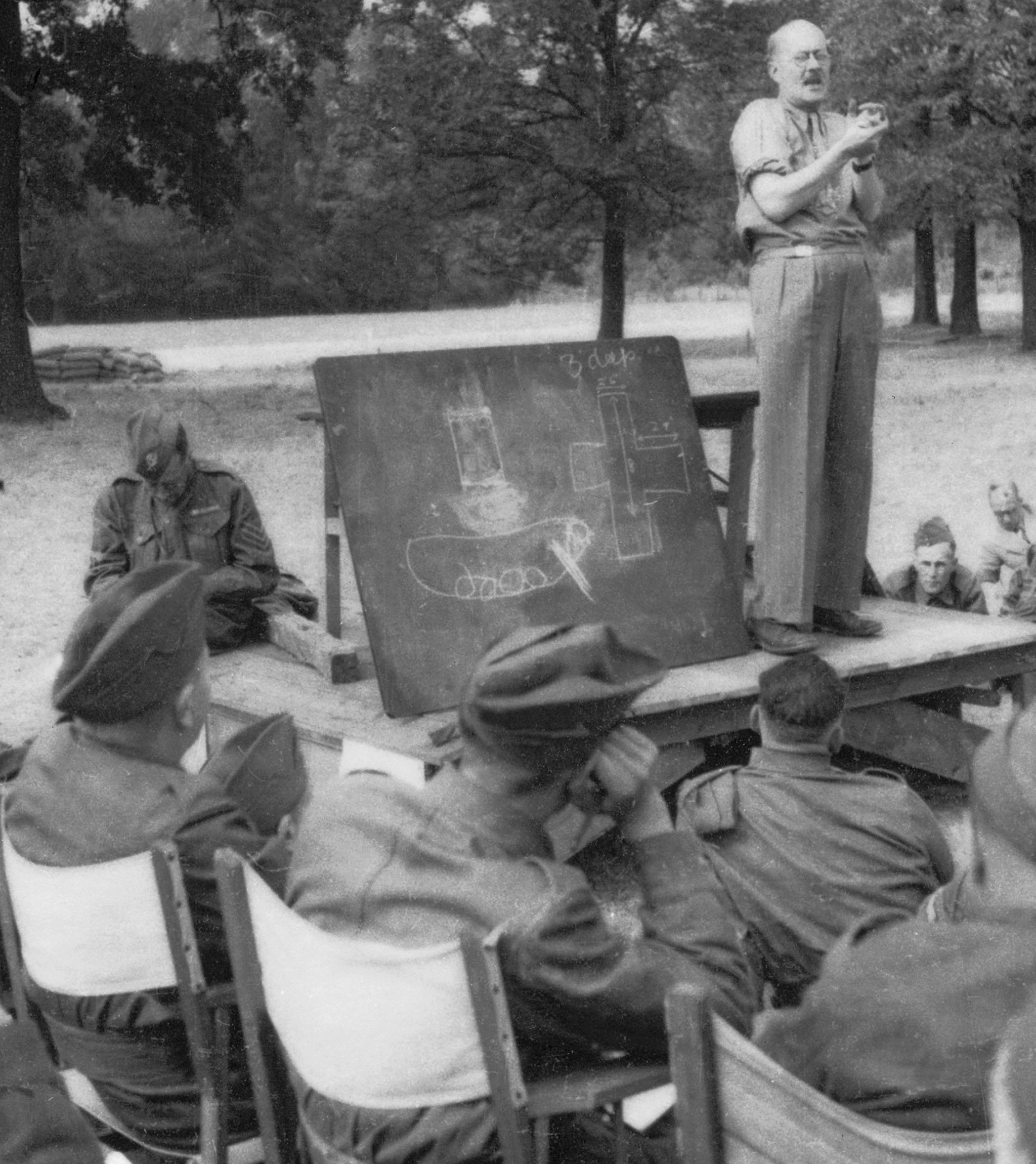Dad's Army: Discovering the deadly fighting force led by 'Britain's Che Guevara' Tom Wintringham
The force started as a deadly ‘people’s army', led by the guerrilla war veteran Tom Wintringham

On a mild afternoon in January, Osterley Park seems an unlikely venue for a headquarters of guerrilla warfare. Low, slow planes droop over the western outskirts of London towards Heathrow. Dog walkers take tea and scones in the stable block next to the National Trust-owned mansion: an odd but striking mishmash of Thomas Gresham’s brick Elizabethan towers and the gleaming neoclassical colonnade added by Robert Adam in the 1760s. Estate workers plod around the sodden park, doing winter chores. So far, so heritage. The most startling things on display at Osterley today are the daffodils, with their freakishly early blaze of gold. It takes a leap of imagination to see this tranquil stately home as a hub of insurrectionary violence, viewed by our own top brass as well as the suspicious Nazis as little more than a terrorist training camp.
It was on these incongruous grounds that, in 1940, Basque anarchists, American rebels, Surrealist painters and British militants taught guerrilla tactics to thousands of zealous volunteers under the direction of Tom Wintringham. He was an ex-Communist agitator and commander of the British Battalion of the International Brigades in the Spanish Civil War who had, in his twenties, done jail time for sedition after helping to plan the 1926 General Strike. His “bunch of revolutionaries at the end of the Piccadilly line” (in the War Office’s aghast opinion) learnt how to wreck tanks, sabotage buildings and destroy planes, as well as build and use improvised grenades, mortar bombs and Molotov cocktails.
Wintringham had set up this school of irregular combat because he yearned to convert a newly recruited organisation for home defence into a revolutionary anti-Fascist fighting force. The 9th Earl of Jersey, who owned the Osterley estate, made his property available. Within four months, in summer 1940, more than 5,000 eager would-be guerrillas had learnt the dark arts of asymmetrical violence against well-equipped regular units. At Osterley, Wintringham tried to kick-start a genuine People’s Army. Yet we know the corps that he sought to transform through this vanguard camp as “Dad’s” Army.
This week, the new feature film of Dad’s Army opens. A cast that includes Toby Jones, Bill Nighy, Michael Gambon and Catherine Zeta-Jones will reprise the roles created for David Croft and Jimmy Perry’s much-loved television comedy, which originally ran for nine series between 1968 and 1977. After more than two post-war decades of near-oblivion, the Home Guard set up to protect Britain from the imminent threat of invasion embarked, in the late 1960s, on its mythological afterlife. That has lasted almost half a century. Oliver Parker’s film will doubtless extend it for a few more years.
Since almost as soon as the first episode aired, the search for the “real” Dad’s Army has partnered the sitcom’s sanctification as an icon of popular culture. From the off, the show mingled history, memory and myth almost beyond all hope of disentanglement. When, in the early 2000s, the historians Penny Summerfield and Corinna Peniston-Bird were conducting interviews with former Home Guard volunteers, they found that remembered fact and televised fiction had long since blurred. Thanks to this “cultural circuit”, the veterans borrowed “versions of the past that circulated in the public domain” when making sense of their own experience. Dad’s Army had “influenced the imaginative possibility of their own recall, and shaped their personal memories”.
Perry, though, has acknowledged that the squad of hapless bunglers he scripted deviated from his own experience within a unit that evolved into “a very efficient guerrilla force”. Most were not frail pensioners but “chaps about your age, waiting to be called up”. In the Watford Home Guard, one Major Strong, a “seasoned guerrilla fighter” who had soldiered in Spain, regaled Perry and his comrades with lectures on social justice. Which takes us back to Osterley Park, and the moment when a domestic defence corps looked less like a dodderers’ playground than the last, shocking word in “ungentlemanly warfare”.

The early days of the Home Guard witnessed a head-on collision between the People’s Army and Dad’s Army. Even as late as the doomed Norwegian campaign of spring 1940, the prospect of an anti-invasion militia appeared fanciful. When one MP called for a force of guerrilla snipers, or “francs-tireurs”, the diarist-politician Harold Nicolson judged him “a little bit off his head”. Then came the rout of the British Expeditionary Force in France, followed by the desperate evacuation from Dunkirk. With France soon to fall, invasion now felt not just probable but imminent. The regular Army could draw on a mere 15 half-strength infantry divisions in the southern counties, and only 463 tanks.
Don’t panic? In private, many did. Unbidden, ad hoc bands of home defenders mustered around Britain. Deep in the shadows, “Section D” of the Secret Intelligence Service (SIS), under the elusive Major Lawrence Grand, began to expand its existing plans for a secret guerrilla force. When Admiral Hugh Sinclair, the pre-war head of the SIS, proposed the creation of undercover squads, Grand had asked him: “Is anything banned?” “Nothing at all,” came the reply.
In public, home defence began as a much more sedate affair. On 14 May 1940, the day after the incoming Prime Minister, Winston Churchill, had told the Commons that he had “nothing to offer but blood, toil, tears, and sweat”, the War Secretary, Anthony Eden, broadcast a call for recruits to join the new Local Defence Volunteers (LDV). Within 24 hours, a quarter of a million signed up; within six weeks, 1.5 million. Contrary to stereotype, many were battle-hardened veterans of 1914-18, the regular Army or other fields of war. George Orwell, like Wintringham a Republican fighter wounded in Spain, became a sergeant in St John’s Wood.
At its birth, the LDV – which scoffers decided stood for “Look, Duck and Vanish” – had no uniforms, few weapons and a confused mission. Military traditionalists wanted no more than a docile special constabulary. For radicals such as Wintringham, though, the volunteers deserved the training and equipment required to transform them into a fearsome anti-Nazi vanguard. German propagandists were in no doubt that the British government had licensed “the formation of murder bands”, who would merit drastic punishment.
The tide of opinion soon turned in Wintringham’s direction. In July, Churchill authorised an expensive change of name from the LDV to the tougher, more martial “Home Guard”. Through official armouries, private stores or shady bulk purchases from overseas, guns and ammunition came into the hands of the volunteers – though at a glacial pace. In 1943, Noël Coward was still singing about Home Guard shortages: “Could you please oblige us with a Bren gun?/ Or failing that, a hand grenade will do/ We’ve got some ammunition, in a rather damp condition/ And Major Huss has an arquebus that was used at Waterloo…”
Hugh Purcell, Wintringham’s excellent biographer, argues that, with Bren guns or without, his subject “inspired the formation of the Home Guard”. As a champion of The Last English Revolutionary (the title of his book), Purcell may be suspected of cheerleading for his hero. But Malcolm Atkin’s eye-opening new investigation into plans for an underground “British Resistance”, Fighting Nazi Occupation, agrees. After Dunkirk, “Wintringham had a huge influence”, Atkin argues, “by creating a popular mood that demanded a more aggressive role” for the Home Guard, “and its expansion into a ‘people’s army’”.

Via his school for armed resistance, Wintringham hoped to broaden the remit and sharpen the edge of the new corps. He had funds from Edward Hulton – the proprietor of the magazine Picture Post – and facilities from the Earl of Jersey. Meanwhile, his tracts on military democracy and backyard combat – How to Reform the Army, and a Penguin Special entitled New Ways of War – sold in excess of 100,000 copies. The latter book grew notorious as “a do-it-yourself guide to killing people”. At Osterley, Purcell reports, the atmosphere “was deliberately democratic and informal”. Household pots and pans supplied handy vessels for home-made explosives. Volunteers learnt to disable a tank or even shoot down a Stuka. The Surrealist artist Roland Penrose taught camouflage.
In his column for the Daily Mirror, Wintringham spoke up for Britain’s civilian warriors: “An Aroused People, an Angry People, an Armed People.” For Picture Post, he invoked the socialist Poum militia in Spain (Orwell’s own corps) as a model for the Home Guard: “Superficially alike in mixture of uniforms… in shortage of weapons and ammunition, in hasty and incomplete organisation… they seemed to me more fundamentally alike in their serious eagerness to learn, their resolve to meet and defeat all difficulties.”
As his message spread, Wintringham’s insurrectionary antics at Osterley unnerved the officer class. To them, he embodied what Atkin calls “the dangerous possibility of a descent into anarchy”. For War Office sticklers, the Earl of Jersey’s acres were playing host to a nest of “Marxist hooligans”. In fact, the Communist Party, which he joined in 1923, had expelled Wintringham in 1938. In Spain, he had met the American journalist Kitty Bowler, suspected by the hardliners of Trotskyist tendencies. He refused to leave his unreliable lover, so the Communist Party left him instead.
During the war, he dubbed himself a “revolutionary patriot”, committed to a Popular Front of all progressive forces. In Spain, he wrote: “Two bullets and typhoid gave me time to think.” He returned from the Civil War believing “in a more humane socialism, in a more radical democracy, and in a revolution of some sort as necessary to give the ordinary people the chance to beat Fascism”. To Whitehall bureaucrats, that still made him a turbulent and untrustworthy lefty. Yet in the feverish mood of 1940, as JB Priestley hailed the “organised militant citizen” in one of his popular radio talks, they could hardly just shut him down. So, in classic British fashion, they co-opted him. By October 1940, the authorities had incorporated Osterley Park into a wider plan for a group of weapons-training centres. Wintringham was kept on but marginalised as a “consultant”. By May 1941, growing frustration led him to resign. Still, in Picture Post he went on giving home tips for irregular warfare, such as the priceless – and, to the top brass, outrageous – “We make our own mortar for 38/6.”
The menace of invasion passed with aerial victory in the Battle of Britain and the endless delays to Hitler’s Operation Sea Lion. Gradually, the Home Guard lost some of its makeshift, village-guerrilla spirit. Spit-and-polish returned. Drills and salutes of a kind to gladden the heart of Captain Mainwaring became de rigueur. Local units fell under the auspices of county regiments. As Juliet Gardiner puts it in her history of the home front, Wartime: “It did rather look as if the Blimps were back in control.”
Progress, though, continued on another flank. At its inception, women were strictly excluded from the Home Guard – despite a cry of “What about Boudicca?” in the Commons from the Labour MP Edith Summerskill. She later inspired a freelance network of Women’s Home Defence units. In 1943, the Home Guard grudgingly admitted non-combatant female auxiliaries. Its commanders had tea-and-typing duties in mind. They imposed a blanket ban on ladies with guns. However, while researching their book, Contesting Home Defence, Penny Summerfield and Corinna Peniston-Bird tracked down many women who – often thanks to sympathetic fathers, brothers and husbands – had got hold of armaments and trained seriously with them. “In spite of the ban,” they found, Women’s Home Defence members learnt “to use both the regular and irregular weapons of the Home Guard”.
The Home Guard had to step back into line not simply because the higher ranks dreaded a bolshy rabble in every church hall. In the event of invasion, politicians and soldiers worried about the vulnerability of unorganised irregulars to savage reprisals. Those armbands and badges might offer some protection against torture and execution as – in German eyes – mere “terrorists”. After all, exactly that was happening to informal resisters across Nazi-occupied Europe.
With Osterley legit, but defanged, Wintringham co-founded the left-wing “Common Wealth Party”. It was meant to act as an independent opposition while Labour dutifully served in the wartime coalition. The party flourished for a while, and in 1943 Wintringham almost pulled off a sensational by-election win in the Tory stronghold of North Midlothian. Common Wealth faded as the war ended, and Labour eclipsed it on the way to the landslide of 1945. Aged only 51, Wintringham died of a heart attack in 1949, but not before sketching a blueprint for an international brigade to defuse and resolve conflicts – the germ of today’s UN peacekeeping forces. Hugh Purcell calls him “the only significant Marxist military expert of his time”. That combination might alarm the generals now as much as then.
Thanks to Purcell and other historians of the “people’s war”, Wintringham and his suburban insurgents have started to march out of obscurity. Still, the National Trust does not yet market their HQ as the place where our home-bred Che Guevara trained his compatriots in the armed struggle against Fascism. Guerrilla tactics remain somehow un-British: a view that obliterates the experience of thousands who refused to wait until the Brens arrived, and took the Piccadilly line to learn every trick of the street-fighter’s trade. In national myth, Dad’s Army has vanquished the People’s Army. But at a time when “We’re all doomed” felt like a plain statement of fact, the Osterley guerrillas fought back with every rusty rifle, milk-bottle Molotov and jam-pot bomb at their disposal. µ
‘Dad’s Army’ is on general UK release from 5 February
Join our commenting forum
Join thought-provoking conversations, follow other Independent readers and see their replies
Comments
Bookmark popover
Removed from bookmarks